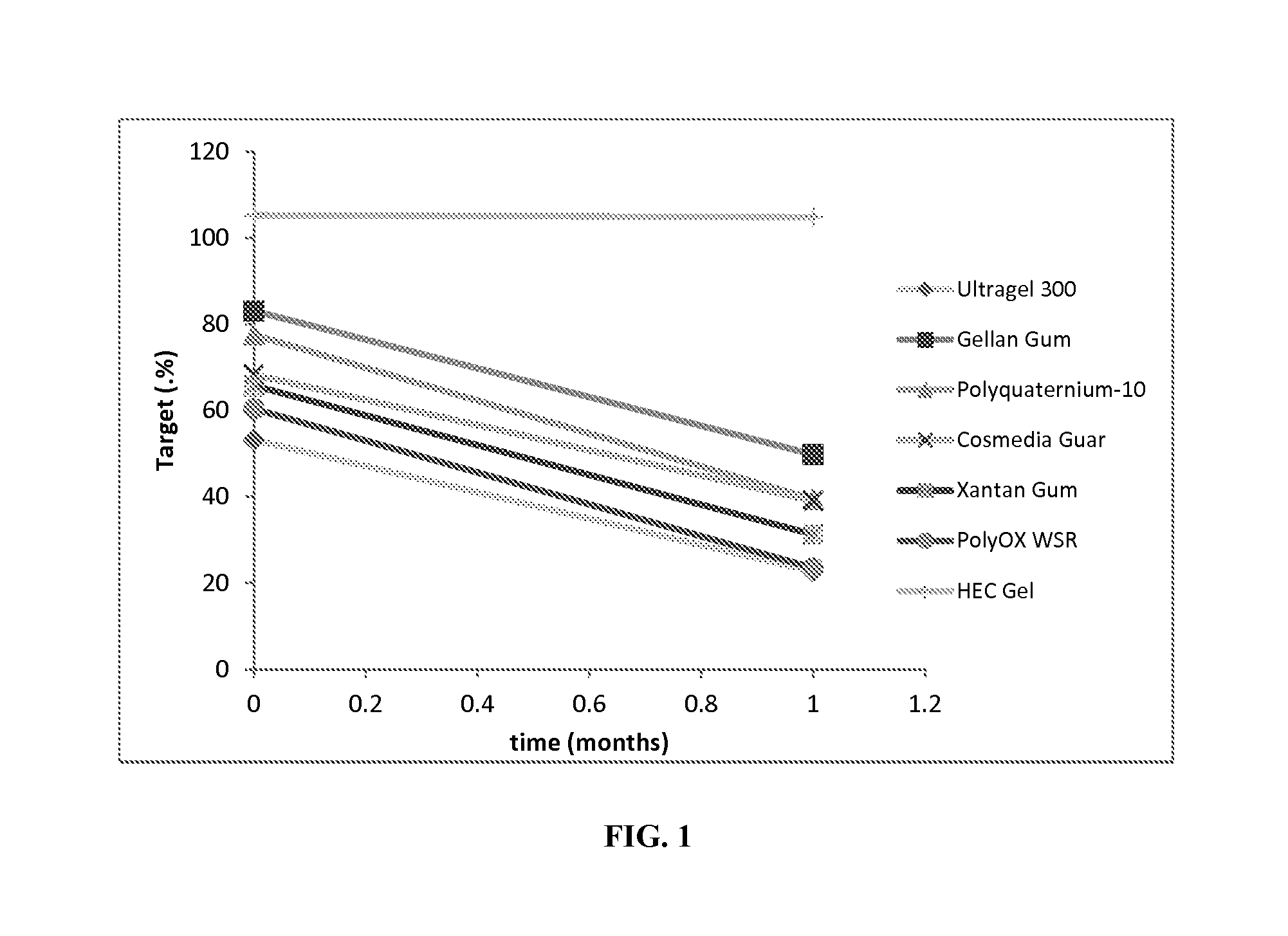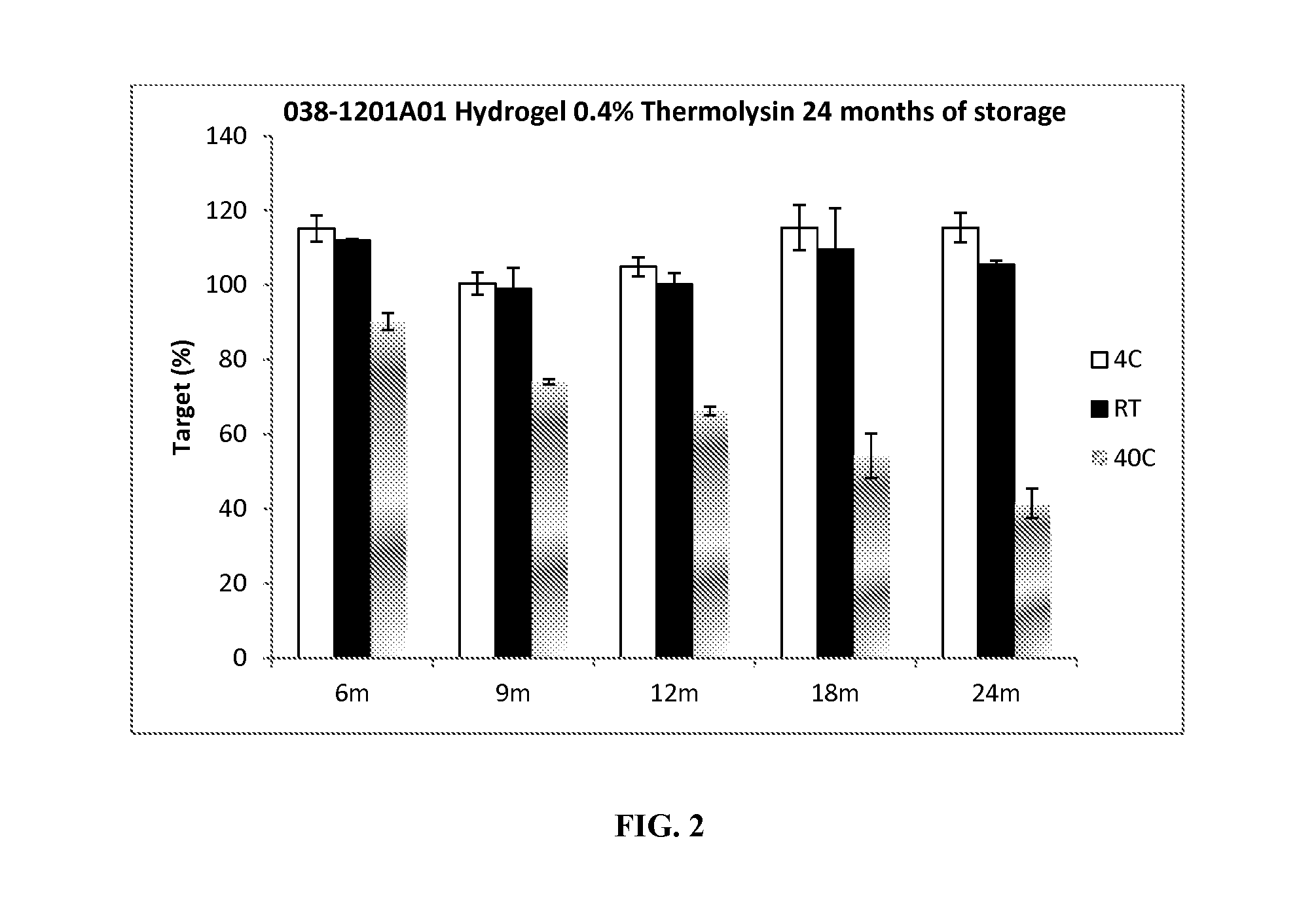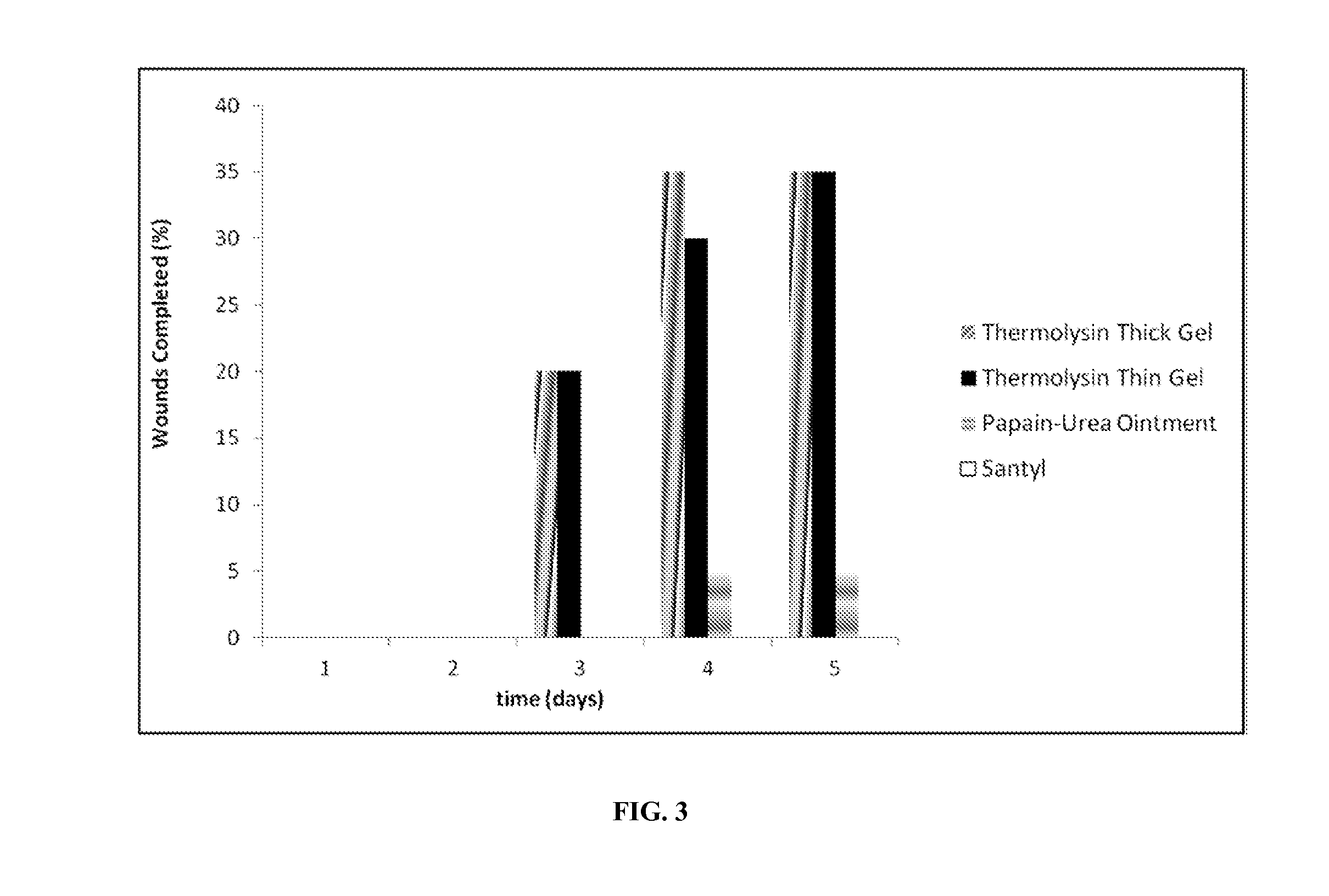Stable thermolysin hydrogel
a thermolysin hydrogel and stable technology, applied in the direction of bandages, drug compositions, peptide/protein ingredients, etc., can solve the problems of achieve the effect of solving the stability problems, high instability and rapid deformation
- Summary
- Abstract
- Description
- Claims
- Application Information
AI Technical Summary
Benefits of technology
Problems solved by technology
Method used
Image
Examples
example 1
Exemplary Formulations
[0043]The following Tables provide non-limiting examples of various hydrogel formulations that include thermolysin and a cellulosic ether.
TABLE 1Thermolysin / HEC Hydrogel (in FIG. 2)Ingredient% Concentration (by weight)Hydroxyethylcellulose (HEC)2.68NaCl0.28CaCl20.11Propylene Glycol14.2Methyl Paraben0.24Propyl Paraben0.05Thermolysin0.3917Tris buffer (10 mM, pH 7.5)q.s.Total100Process: HEC used was Natrosol ® 250 Pharm from Ashland (USA). The buffer used was Tris buffer (10 mM, pH 7.5). The hydrogel was prepared by mixing propylene glycol and preservatives (e.g., methyl and propyl paraben) in Tris Buffer at 70° C. Upon solubilization (i.e., clear solution is obtained), the solution is cooled to room temperature (RT) and gelling agent (HEC) was added. The mixture is stirred until homogeneous (i.e., no visible particles of gelling agent, HEC), a hydrogel is formed. The active phase is made by mixing thermolysin, NaCl and CaCl2 in DI water or Tris buffer (pH = 7.5) ...
example 2
Thermolysin Stability Data
[0044]The stability of thermolysin in the Table 1 Thermolysin / HEC hydrogel was tested over a one-month period while being stored at room temperature (20 to 25° C.). For comparison purposes, various thermolysin hydrogels were also prepared with gelling agents other than nonionic cellulose ethers. Such gelling agents included polyquarternium-10, Ultragel 300, gellan gum, cosmedia guar, xanthan gum, anionic cellulose ether, Carbopols, polaxamers, polyox WSR, and others. The additional hydrogels were also stored at room temperature (20 to 25° C.).
[0045]FIG. 1 provides a summary of the stability results. The thermolysin activity in hydrogels (e.g., HEC hydrogel) might be slightly different than the expected activity, due to favorable or unfavorable influence of the formulation excipients on enzyme activity.
[0046]Data presented in FIG. 1 suggest that, surprisingly, the thermolysin activity for the Table 1 Thermolysin / HEC hydrogel remained the same / did not decreas...
example 3
In Vivo Debridement of Pig Burn Wounds
[0052]The hydrogels in Tables 2 and 3 were evaluated for efficacy in debriding burn wounds in pigs. In this in vivo study, burn wounds were generated on the backs of pigs. Pigs were anesthetized, and the torso was shaved with clippers and a razor and washed with vedadine. Then an isopropyl rinse was performed to sterilize the surgical field. Twenty 2-cm wounds were created on the dorsum of each pig. The wounds were created using solid brass rods, heated to 100° C. in sand baths, held on the skin for 45 seconds. The wounds were left to dry for five days, giving the eschars time to form, with protective foam dressings being replaced every other day during eschar formation. After eschar formation and on a daily basis for treatments, the wounds were cleaned with saline, photographed, treated according to the treatment scheme, and dressed with non-adherent dressings (pre-moistened with saline) secured with Transpore tape and occlusive secondary dress...
PUM
| Property | Measurement | Unit |
|---|---|---|
| Fraction | aaaaa | aaaaa |
| Fraction | aaaaa | aaaaa |
| Fraction | aaaaa | aaaaa |
Abstract
Description
Claims
Application Information
 Login to View More
Login to View More - R&D
- Intellectual Property
- Life Sciences
- Materials
- Tech Scout
- Unparalleled Data Quality
- Higher Quality Content
- 60% Fewer Hallucinations
Browse by: Latest US Patents, China's latest patents, Technical Efficacy Thesaurus, Application Domain, Technology Topic, Popular Technical Reports.
© 2025 PatSnap. All rights reserved.Legal|Privacy policy|Modern Slavery Act Transparency Statement|Sitemap|About US| Contact US: help@patsnap.com



